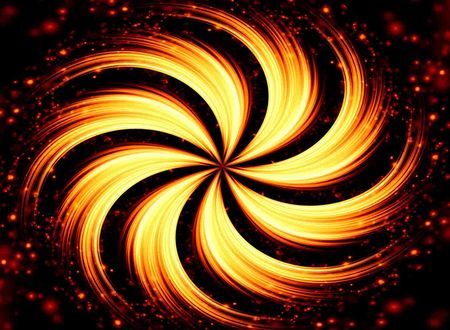Obeisance to my Yoga school “Yoga Vidya Niketan” and Guru Shri Nimbalkar!
Today everyone is reasonably acquainted with the common yoga poses. Indeed, yoga has become synonymous with these postures and for most of the people who do yoga, relevance of yoga as a tool for spiritual growth is negligible or linked with pranayamas only (Specific breathing techniques).
Ever wondered on the difference of yoga postures from other form of exercises? The biggest difference is that most of the yoga postures focus on the spine only. It centers the activity around the spine either stretching it or compressing it or bending it backward or forward or twisting it sidewards. Hands, legs and various body muscles wherever applicable are used to accentuate this activity of spine. On other hand, exercises usually focus on extremities like hands or legs (eg: running, weights etc..)
The traditional yoga postures are never hurried or fast. It is slow, relaxed and focussed on steadiness and length of final posture. Morden requirements are changing this outlook making it an un-yogic posture now by bringing speed and rapid change in postures unfortunately (power yoga).
So what does these traditional yoga poses really do? Allow me to take a couple of specific simple daily yoga poses as examples. The examples considered are yoga mudra and parvat asana. (Take a look at the pictures to know the final postures).

When an adult does the yoga mudra that is a forward bend in a cross-legged sitting posture, there are several parts that come into play. The cross-legged posture itself offers the first level of resistance as legs refuses to be flat and comes up raised from the ground. As the human trunk bends forward to touch the head on the floor, the resistance in legs is further increased as it feels tremendous stretch and pain. For those people for whom this resistance is overcome (probably they have learnt to sit cross-legged from childhood), the resistance may come from the back – it refuses to stretch beyond a point when head moves downwards. For few others, the resistance may come from the front of trunk (stomach) which is bloated and refuses to compress under pressure. Add to this the additional pressure of a fist that is placed at the groin and we have multiple stiff resistances to overcome. As a result, in the final posture where the head is supposed to be touching the floor, most of us end the practice with head drooping in the air with no support from the ground.
If you are the person who holds this posture for a few second and jumps to the next posture consistently during every session, do not expect miracles quickly. The traditional method had always been to hold the final posture for longer and longer duration as per one’s capacity every-time one does a practice. In-short if you hold for 5 seconds the first time, the effort is to increase this duration to 10 seconds or so with consistent practice and not to dance away to next practice and feel good. Indeed, even doing this dance activity will bring improvements, however change will be very very slow.
When you begin attempting to hold the final posture of yoga mudra for the first time, every scream of muscle can be sensed. The strongest scream is heard first. Depending on your body type it could be legs, it could be the back, it could be the stomach, it could be the fist pressure or it could be combination of any or all of above. Pain makes it difficult to maintain posture for long. As we persist with the practice every day trying to increase the hold time, the resistance from different muscle groups start reducing. This is because with regular practice, the muscles begin to train and gain strength to counter the pain. As the muscles gain in strength, volume of pain scream from the loudest muscle sets lowers while the resistance to the activity of stretch or compression is reduced. With continued practice, now higher pain volume sensed comes from another set of muscles (For eg: 1st it was legs now it is back muscles) Regular practice strengthens all the different muscle sets in action. All this allows the head to drop further down and closer to the floor till one day it drops and touches the floor completely. It is zero resistance now. For most children, this is usually noticed in the first attempt itself due to zero resistance from all the various muscle groups. Let’s assume that you choose to push yourself in the first attempt itself. Despite all the pain and screams from the different muscle sets, you put a mental pressure on every organ to make way for the head to touch the floor. In this manner, you sometimes do manage to touch the floor in the first attempt, however the cost is that sometimes certain muscle gets torn in the process leaving you in increased pain and agony and dis-allowing you to repeat the practice again for a long time to come. Even if they are not torn, often the muscle gets so traumatized that a signal gets recorded in the mind that such repeat activity is not welcome and may cost more.
So what can we deduce from above knowledge of internal workings of Yoga mudra (a typical yoga posture)?
- Pain always comes from resistance.
- To reduce pain, resistance needs to be lowered.
- Reducing one group of resistance, makes one aware of next group of resistance
- Lowering resistance comes from developing strength to face the pain and not by avoiding pain itself (One avoids by choosing not to stretch or compress oneself)
- With increased strength and lowered resistance there is no pain or pain volumes are at manageable levels.
- Strength is a measure of resistance to compression or stretch. Strength increases to reduce or annihilate the resistance.
- Mental strength rules over physical strength. This allows for a person to manage the floor touch of head in first attempt overruling physical constraints if any.
- However, when mental strength is enforced on the physical self, it costs and reduces life (muscles are bunch of tissues and cells that may need replacement earlier than design).
- Gradual and incremental training allows mind to coax physical self to increase strength while allowing for full life of muscle set (as per design). There is a union between body and mind here (This is true Yoga)
- Positive change happens with persistent efforts in yoga (union of mind and body). For eg: Muscles rewire themselves for improved strength to counter the regular stretch or compression.
- Daily yogic practice thus paves way for a longer healthy and useful life of the human being
With the above example the entire methodology and logic behind different yogic posture can be understood or deduced. Yet, I choose to add another example of parvat asana. There is a reason behind this.
In Parvat Asana, we stretch our hands above our head completely while keeping the palms joined. Here there is a stretch to the spine which is accentuated by the palms joining and elbows kept straight and in line with ears. However this posture has an important distinction from a yoga mudra posture. Unlike yoga mudra where external forces support the posture, in parvat asana the external forces act against the posture. Not getting it?? If we observe carefully, putting our heads down in yoga mudra, we allow gravitational force to take over also. This force helps train the various muscle sets to gain strength faster. However, in parvat asana the hands stretched out are acting against gravitational force. Thus, maintaining this posture for longer duration is rendered even more difficult due to gravitational force seeking to lower the hands.
Now why is this distinction important?? One develops internal strength with sustained efforts in reducing resistance. Digressing a little, external strength is often highlighted by resistance offered in different life situations and not by lack of it. Probably, that’s why we are used to resist everything instead of accepting. We think resisting is as a sign of strength. This by itself is a topic for discussion on another day.
Internally, reducing resistance by increasing strength allows for increased life of muscle set as per design. This applies for mental muscles as well. However, when our body muscles seek to resist natural forces like gravity, the increased strength again costs by shortening life expectancy of the muscle set. In other words, it is not sustainable to hold the anti-gravity posture for longer duration without any repercussion.
What I understand from this is that when we improve and use our full “mental” strength to move with life currents, we lead a long and wonderful life however when we use our mental strength to move against life currents, we must expect our life to get lowered in the process. This statement can be thought-provoking and may lead to several related questions. But this is an enquiry that I recommend each one of us to internally delve upon.
Om!









Comments & Discussion
5 COMMENTS
Please login to read members' comments and participate in the discussion.